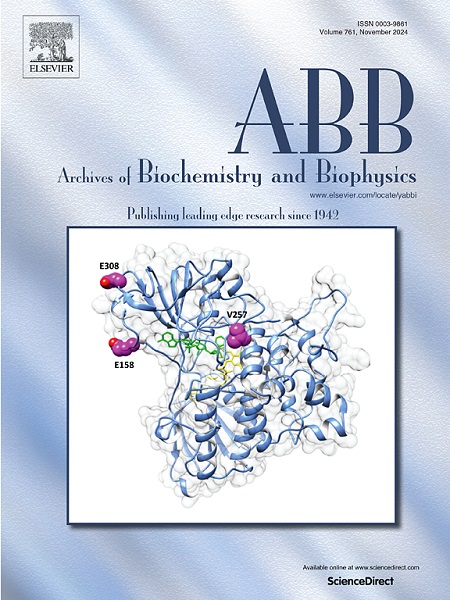Identification of positions in human aldolase a that are neutral for apparent KM
IF 3.8
3区 生物学
Q2 BIOCHEMISTRY & MOLECULAR BIOLOGY
引用次数: 0
Abstract
According to evolutionary theory, many naturally-occurring amino acid substitutions are expected to be neutral or near-neutral, with little effect on protein structure or function. Accordingly, most changes observed in human exomes are also expected to be neutral. As such, accurate algorithms for identifying medically-relevant changes must discriminate rare, non-neutral substitutions against a background of neutral substitutions. However, due to historical biases in biochemical experiments, the data available to train and validate prediction algorithms mostly contains non-neutral substitutions, with few examples of neutral substitutions. Thus, available training sets have the opposite composition of the desired test sets. Towards improving a dataset of these critical negative controls, we have concentrated on identifying neutral positions – those positions for which most of the possible 19 amino acid substitutions have little effect on protein structure or function. Here, we used a strategy based on multiple sequence alignments to identify putative neutral positions in human aldolase A, followed by biochemical assays for 147 aldolase substitutions. Results showed that most variants had little effect on either the apparent Michaelis constant for substrate fructose-1,6-bisphosphate or its apparent cooperativity. Thus, these data are useful for training and validating prediction algorithms. In addition, we created a database of these and other biochemically characterized aldolase variants along with aldolase sequences and characteristics derived from sequence and structure analyses. This database is publicly available at https://github.com/liskinsk/Aldolase-variant-and-sequence-database.

确定人类醛缩酶 A 中对表观 KM 呈中性的位置。
根据进化理论,许多自然发生的氨基酸置换应该是中性或接近中性的,对蛋白质的结构或功能几乎没有影响。因此,在人类外显子组中观察到的大多数变化预计也是中性的。因此,识别医学相关变化的精确算法必须在中性取代的背景下区分罕见的非中性取代。然而,由于生化实验中的历史偏差,可用于训练和验证预测算法的数据大多包含非中性取代,中性取代的例子很少。因此,可用的训练集的组成与所需的测试集正好相反。为了改进这些关键阴性对照的数据集,我们集中精力识别中性位置--那些可能的 19 个氨基酸替换中大部分对蛋白质结构或功能影响甚微的位置。在这里,我们使用了一种基于多序列比对的策略来确定人类醛缩酶 A 中的假定中性位置,然后对 147 个醛缩酶取代位点进行生化检测。结果表明,大多数变体对底物果糖-1,6-二磷酸的表观迈克尔斯常数或其表观合作性的影响都很小。因此,这些数据有助于训练和验证预测算法。此外,我们还创建了一个数据库,其中包括这些变体和其他具有生物化学特征的醛缩酶变体,以及醛缩酶序列和通过序列与结构分析得出的特征。该数据库可通过 https://github.com/liskinsk/Aldolase-variant-and-sequence-database 公开获取。
本文章由计算机程序翻译,如有差异,请以英文原文为准。
求助全文
约1分钟内获得全文
求助全文
来源期刊

Archives of biochemistry and biophysics
生物-生化与分子生物学
CiteScore
7.40
自引率
0.00%
发文量
245
审稿时长
26 days
期刊介绍:
Archives of Biochemistry and Biophysics publishes quality original articles and reviews in the developing areas of biochemistry and biophysics.
Research Areas Include:
• Enzyme and protein structure, function, regulation. Folding, turnover, and post-translational processing
• Biological oxidations, free radical reactions, redox signaling, oxygenases, P450 reactions
• Signal transduction, receptors, membrane transport, intracellular signals. Cellular and integrated metabolism.
 求助内容:
求助内容: 应助结果提醒方式:
应助结果提醒方式:


